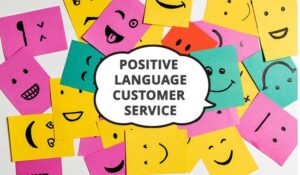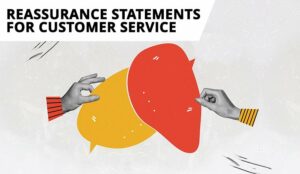This article looks at how to say No to a customer – nicely.
If you work in retail, you often find a customer knocking on your door for a refund or return.
A combination of factors has given some consumers the belief they can return anything at any point for a full refund regardless of how battered it is.
We are often left in the unenviable position of having to tell the customer: you broke it.
Below are some tips which might see you through. To be clear, what follows is a methodology that can help steer a conversation.
- A query regarding something ostensibly faulty can never be addressed successfully first contact. FCR is simply not possible. You need to get into investigation mode. Ask for details/photos/videos. Collect information. Be proactive. Any conclusion you ultimately give to the customer needs to be anchored in the logic deduced from this data.
- If the photos are inconclusive or if the item is particularly valuable get it in to your office for an inspection (if this is viable). Diligently date and document all the checks you do. This is incredibly important to give you credibility. More on that in a moment.
- Keep the customer in the loop as this process chugs along. If you allow the customer to chase you you’ve lost the upper hand and they will absolutely use your silence against you at some point.
- The customer invariably makes this personal. It’s not. It’s a binary business decision: damaged or not. To distance this decision from anything even approaching my opinion I use a form. Repair centres have been using these for generations. There is absolutely no reason why the modern contact centre can’t too. Here is a link to a starter template I use. The success of this form hinges on two things; micro detail and emotionless, bureaucratic language.
So that’s the admin side of it covered. Now for the human part, which is demonstrably more volatile. The funny thing is we all know exactly what the customer is going to say, don’t we? We’ve either heard it before or they are words we would use ourselves to get our own way…
Are you calling me liar? (Or sometimes; Prove I did it.)
Answer: The condition of the product indicates something accidental has happened. The allocation of blame for the accident has never been considered, nor would it be.
I’m going to contact my solicitor/watchdog/regulatory body
Answer: We are sorry you are disappointed with our assessment. As a consumer, it is of course your prerogative to seek advice.
I’m going to tell everyone on social media/Trustpilot/etc.
Answer: We are sorry [etc.]. Social media has given customers a voice. We accept and encourage people to share their experiences. Naturally we work hard to ensure they are positive.
I’m going to raise a chargeback with my bank
Action: If you have a team responding to chargeback disputes, don’t react to this. If not, you need to negotiate this one out, or else you could end up out of pocket for up to twice the original value of the order.
The reality is customers generally know what has happened to the product. Ultimately, you should get in front of any query swiftly and strategically dismantle the customer’s arguments.
Dear xxx
Our assessment indicates your product is not eligible for return due to the presence of damage inflicted outside of the place of manufacture. Transit damage has been ruled out as this would have been present and reported on upon delivery.
The condition of the product indicates an external force has been applied by a 3rd party. The inspection assessment is attached detailing how this conclusion was reached.
We acknowledge this is not the message you wanted to hear. If you would like to contest our decision, there are various independent organisations who can provide you with advice. I am happy to authorise the provision of my details to them should they wish to investigate further on your behalf.
We do accept this damage is most likely caused unintentionally. As a gesture of goodwill, we would be happy to provide a xx% discount off a replacement purchase. [optional paragraph].
If there is any aspect of this you would like to discuss with me please get in touch. I will always do whatever I can to assist you now or in the future.
Yours sincerely
Customer Services Manager
[Company]
Don’t fear social media or review site negativity, but do provide a response to it when it’s posted. We cannot please all the people all the time and unless you have bigger more systemic problems resulting in a collapse of service, negative reviews will get pushed into irrelevance by fresher nicer ones.
Saying “No” is never pleasant, but, as with all things, it gets easier the more you do it. Ensure you always deliver a negative message confidently. Don’t umm, ahh, stumble, stutter, sigh or swear. The customer should never be able to blind-side you.

Darrell Huntley
With thanks to Darrell Huntley, Head of Customer Service at Flubit.com. Darrell joined Flubit in 2015 and built a platform integrating seamless customer support for seven channels. His approach is to ensure customers’ expectations are well managed and that his teams are energised and empowered to help in the very best and quickest ways available.
Flubit.com is the UK’s biggest independent online marketplace for products, helping customers secure the best price on over 54 million products. For more information, visit www.flubit.com
Author: Rachael Trickey
Reviewed by: Megan Jones
Published On: 9th Jan 2017 - Last modified: 14th Aug 2025
Read more about - Skills, Free Downloads, Skill Development
















Really good Answers, however this would be best suited for B2B, from a customer service point of view, this is really wordy – simple language is key when it comes to customers, they appreciate it more.
You’re right Liam, simpler language is taken better. Getting the right words in the right order is the tough bit though. Freestyle with these examples by all means.